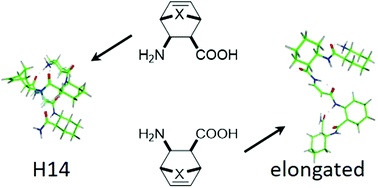*
Corresponding authors
a
Institute of Pharmaceutical Chemistry, University of Szeged, Eötvös u. 7., H-6720 Szeged, Hungary
E-mail:
fulop@pharm.u-szeged.hu, mandity.istvan@ttk.mta.hu
b
Department of Organic Chemistry, Faculty of Pharmacy, Semmelweis University, Hőgyes Endre u. 7., H-1092 Budapest, Hungary
c
Servier Research Institute of Medicinal Chemistry (SRIMC), Záhony utca 7., H-1031 Budapest, Hungary
d
Department of Pharmacognosy, Faculty of Pharmacy, Semmelweis University, Üllői út 26., H-1085 Budapest, Hungary
e
Institute of Materials and Environmental Chemistry, Research Center for Natural Sciences, Hungarian Academy of Sciences, Magyar Tudósok krt. 2., H-1117 Budapest, Hungary
f
Department of Medical Chemistry, University of Szeged, Dóm t. 8., H-6720 Szeged, Hungary
g
MTA SZTE Biomimetic Systems Research Group, Dóm t. 8., H-6720 Szeged, Hungary
h
MTA TTK Lendület Artificial Transporter Research Group, Institute of Materials and Environmental Chemistry, Research Center for Natural Sciences, Hungarian Academy of Sciences, Magyar Tudósok krt. 2., H-1117 Budapest, Hungary



 Please wait while we load your content...
Please wait while we load your content...